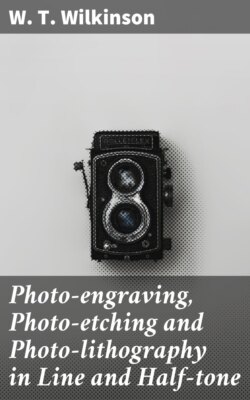Читать книгу Photo-engraving, Photo-etching and Photo-lithography in Line and Half-tone - W. T. Wilkinson - Страница 11
На сайте Литреса книга снята с продажи.
PROTECTING THE COLLODION FILM.
ОглавлениеA collodion film, when dry, is very delicate, and, except for line work in the hands of an expert, will require protecting. This is usually done by slightly warming it (when quite dry) in front of a fire, and then pouring over a sufficient quantity of thin spirit varnish. After the superfluous varnish is well drained off, dry by again holding it in front of the fire. The spirit {21} varnish answers perfectly for ordinary work, but for printing upon metal for relief blocks, or upon glass for collotypes, it will be best to use a benzole varnish, such as is sold by dealers for protecting the films of glass positives or ferrotype pictures. Anthony’s “diamond” varnish is good.
But the best plan of all is to use a water varnish, made by dissolving half an ounce of borax in a quart of boiling water, then adding a few pieces at a time (stirring meanwhile), one pound of ordinary shellac; if the quantity of borax named does not suffice to make all the shellac dissolve, add more, a grain at a time, until the shellac is dissolved; then add half an ounce of white sugar, cool and filter it.
When the negative is washed for the last time, allow it to drain, then flood with the above solution, and let it dry. This will be found a quicker, cleaner, and more satisfactory method of protecting the delicate film than with the spirit varnish.
